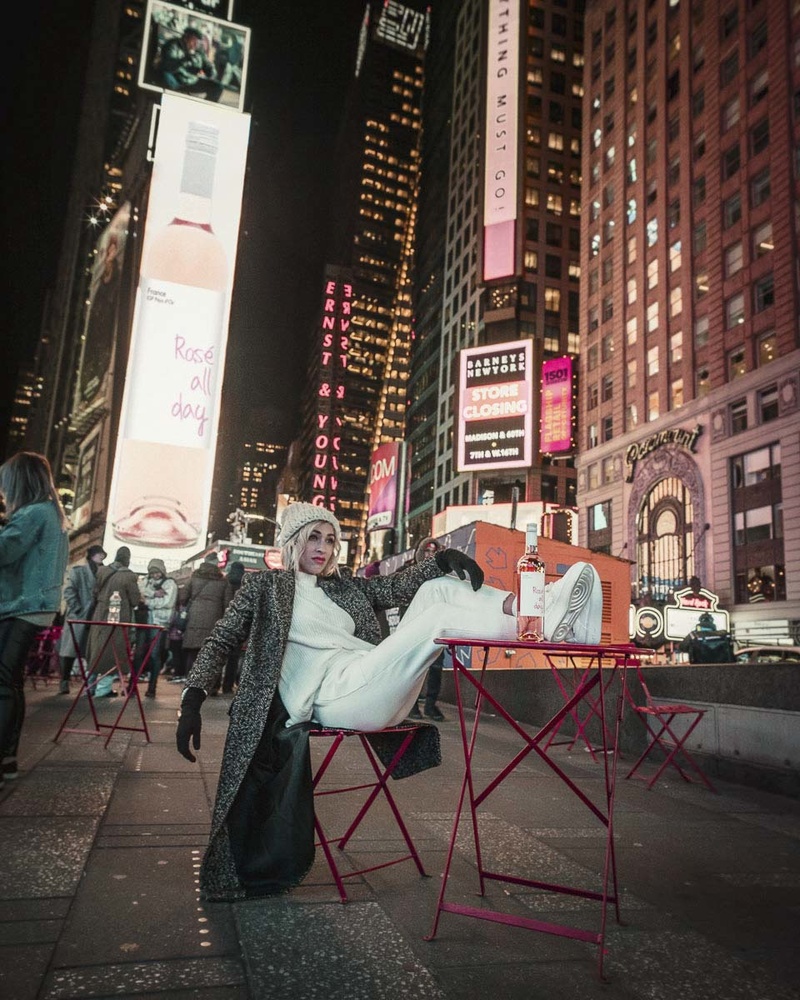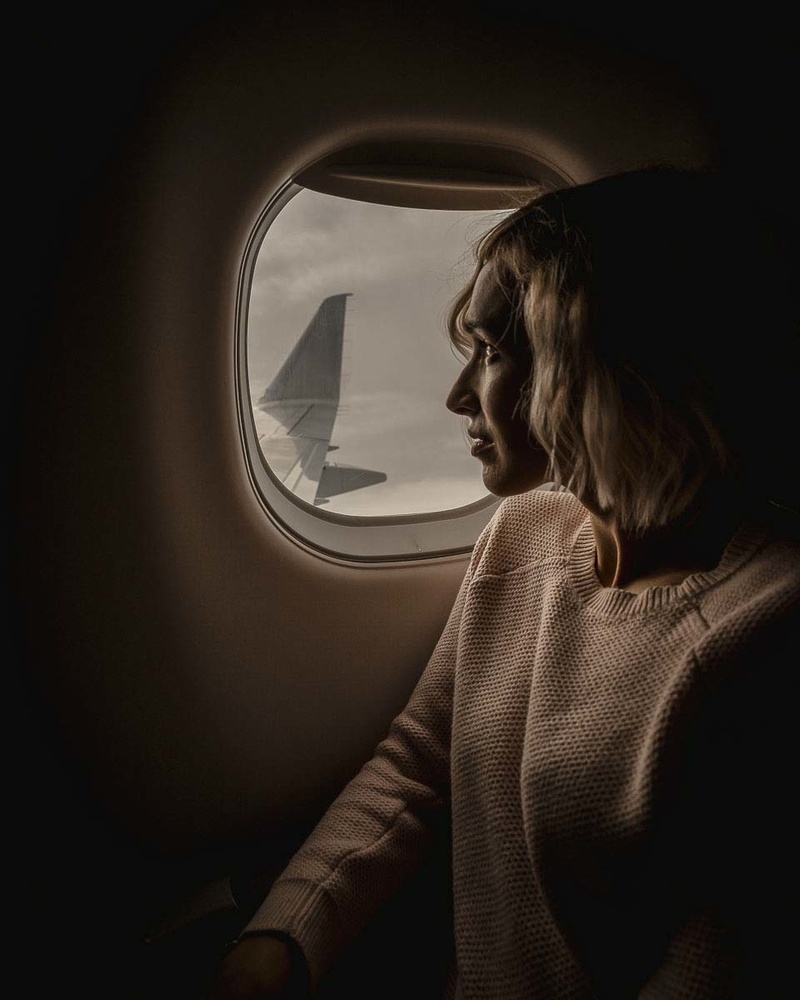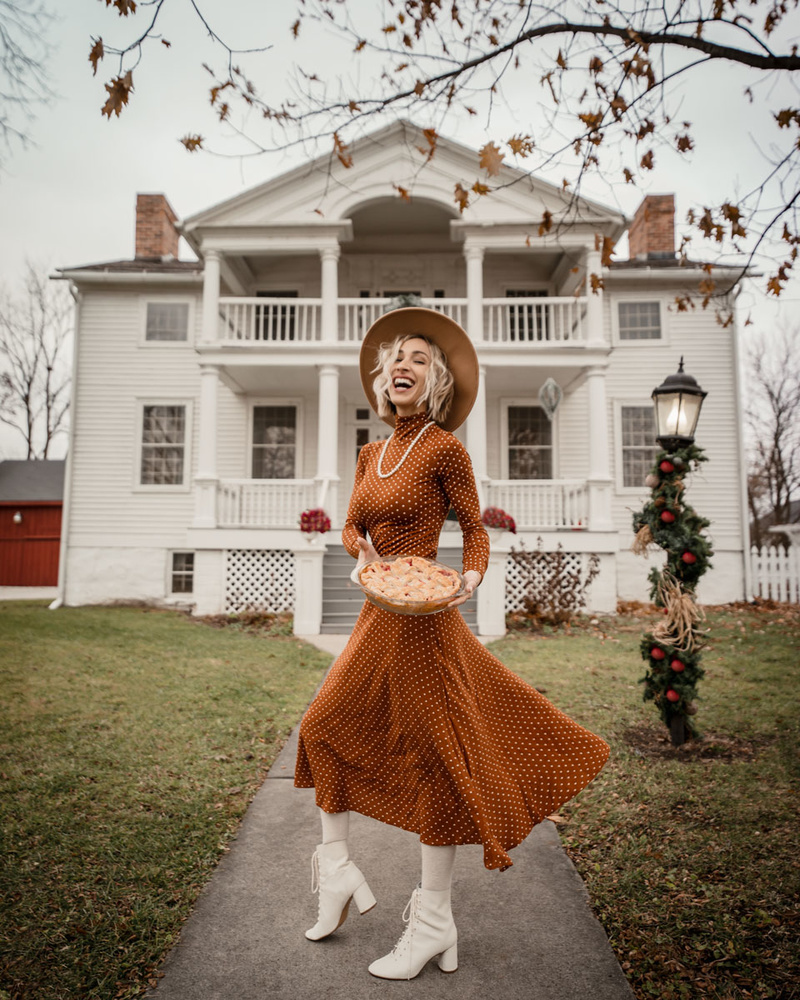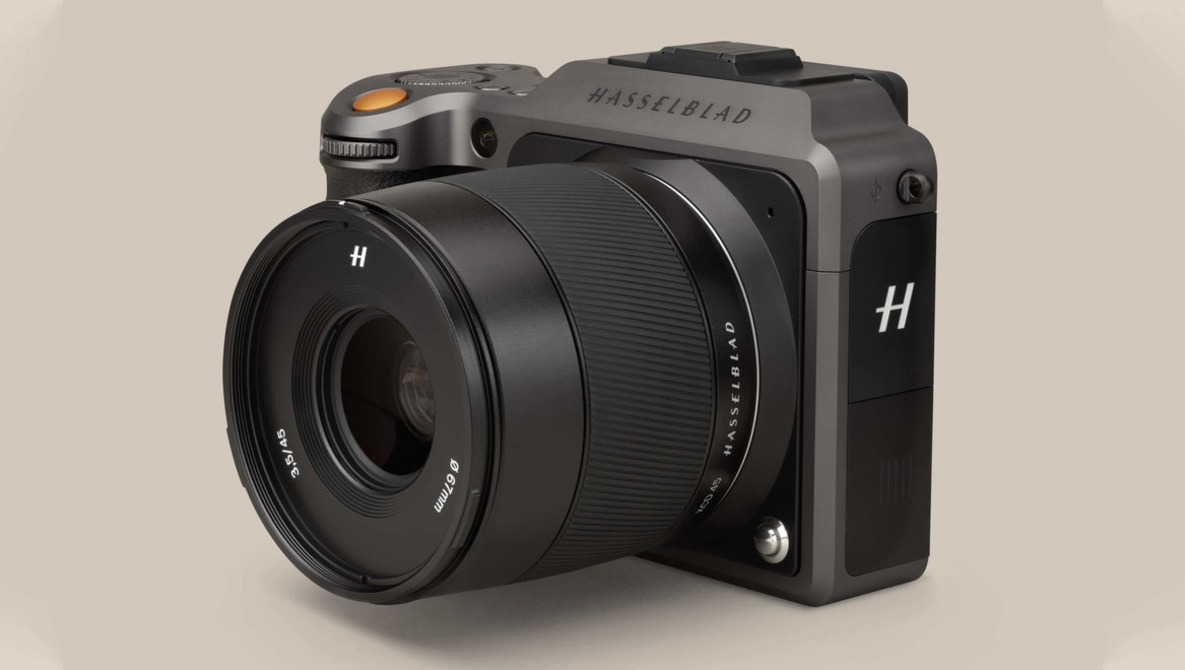I recently got the chance to use the new Hasselblad X1D II for a week. It was my first experience with medium format and required a bit of adapting on a learning curve. Here are my first impressions about the body, design, lenses, and general usability of the camera.
You know the feeling you get when you’re walking down the street and there’s a shiny new Lamborghini parked outside? You pull out your phone and snap a picture to send to your friends. You even look around to see if anyone is around and think to yourself: “how close can I get to it? Should I touch it? I wonder if it’s unlocked? Man, this leather is soft. Why are they putting me in handcuffs? I was just smelling it!?” Just me? Well, I get the same feeling when I see a Hasselblad. To be totally honest, I thought my chances of using a Hasselblad were about the same as getting to joy ride that Lamborghini. When Hasselblad agreed to send me an X1D II and a couple lenses to test out, I was kind of in shock, but obviously jumped at the chance. I’ve always said a camera is a camera is a camera. If you call yourself a photographer, I should be able to give you any camera and you should take a good picture. But there is something to be said about nice gear that inspires creativity. It puts you in a new mindset and excites you. This camera definitely did that for me.
So, I thought I’d share with all of you my first experience with medium format. In full disclosure, I’m not a technical photographer. I’m not the guy who’s is going to run side-by-side tests to compare pixel counts or zoom into 800% to show you which image is a hair sharper on the edges. I’m sure as hell not going to waste time trying to beat this camera with my iPhone. So, if you want to nerd out about megapixels and dynamic range and ISO, you can skip past this article, because there are plenty of those out there. Instead, I just used the camera like I would my normal DSLR. I took it to my in-laws for Thanksgiving, and I brought it on vacation in NYC with my wife. I also shot some corporate/commercial agency headshots at my day job with it.

I was a little intimidated at first and just wanted to see how it would fit in my real-life workflow. I wanted to see if this was a camera I could get comfortable with and get used to operating the way I shoot everyday. Sure, it would be fun to take the Lamborghini to the race track for speed tests, but does it really work for my daily commute to work, getting the kids to school, or running to the grocery store?
First Impressions

This thing is well built. Every part of it. It’s just pretty too. That silver finish and orange button is sexy. As soon as I pulled it out of the bag, all my fears of breaking this thing went out the window. It’s built like a tank. Admittedly, I’m not the most careful person with my gear, but I’d have to do some pretty stupid stuff to really do any damage to this camera. I didn’t put it to the test, but I’m pretty confident this camera could take a beating if it needed to. Everything was metal and solid. No plastic or loose jiggly buttons. Everything, including the lens hoods were built to last . Once I snapped a lens on, the camera and lens became one piece. The mount is strong and solid. Zero wiggle. It felt like the lens was part of the camera body.

Even though the build is so strong with lots of metal, it didn’t feel dramatically different than my D850 in weight. The body grip was smooth and felt natural in my hands. I’m not good with change, but this felt natural right away.
The only thing that threw me off was the simplicity of the design. My D850 has way more buttons and knobs on it that each have their own function. This camera had minimal buttons that do multiple features. So, in their attempt to simplify, I had to take more time to find certain functions. But I guess that's a trade you have to make for such a solid build and clean design.
The LCD screen is huge. I’m actually not a fan of LCD touchscreens in general, especially for getting around menu functions. I use a RED camera at work all the time for video and find the touchscreen lacking and at times even frustrating because of all the lag. But the Hasselblad just plain works. It felt like the same responsiveness as my iPhone. If I touched it, it reacted right away. I didn’t have to poke at the screen 10 times to get it to do what I wanted.
Negatives
So far, you’re probably thinking this is a review sponsored by Hasselblad, but I promise you it’s not, and I also promise it’s not all roses. There were some things I didn’t love about the camera. Although as I’m writing this, I realize negatives with the camera may just point out flaws in my own shooting style, which may be why they are getting tagged in the negative section. First and foremost, this camera makes you slow down in almost every aspect of your photography. That's a real struggle for me. I hate to be tied down. I don’t tether and rarely use a tripod. My camera is typically set to burst mode, even when it doesn’t really need to be. I shoot fast, and I shoot a lot! This camera isn’t built for that.
The main reason, in my opinion, for that is the focus system. It’s slow, though apparently faster than the first version, but I can’t speak to that. But compared to my D850, the focus is slow, and it doesn’t track, especially in low light and backlit situations. When shooting at night or into the sun, I found myself using the manual focus more than the autofocus. Luckily, the EVF has a pretty good focus assist mode, which I found extremely helpful. Moving subjects were also a challenge. We have an adorable new puppy and two kids, and trying to get candid shots of them jumping around is a challenge with any camera, but nearly impossible with this one.


This may seem like a nit-picky negative, but the only design element I didn’t like was the placement of the memory card slots. I wish the cards and the USB slot were switched. The latch to get to the cards was so close to the strap connector that every time I tried to open it, I had to mess with the strap and move it out of the way. This situation would also be resolved by using a bottom screw-in sling strap like the one I have on my personal camera. I use the Black Rapid.
The camera didn’t feel as great in low light as other cameras I’ve used. Again, that could be a dig on my shooting style rather than the camera. But as I mentioned before, I don’t like to use tripods, and when hand-holding, I could only slow my shutter to about 1/30th of a second before I stopped getting usable images. I had to go to a pretty high ISO to get there, which started to knock down the image quality very quickly. If you shoot on a tripod and love slow shutter images, this is probably not a problem, but for me walking around NYC at night, I struggled, even in places like Times Square, where I felt like with my D850 there would have performed just fine.


Positives
Quality, quality, quality! Hands down, the best quality images I’ve ever shot. I know I said I wouldn’t pixel-count or zoom into 800%, but if you take your time, have good light, and get a good image, you can almost zoom in endlessly. Medium format also has a look and feel to it that I can’t really put into words, but I kept saying to my wife: “Everything just looks smoother!” The medium format sensor just has a “look” to it that is all its own. The transitions from light to dark are so smooth, and you can push them to the limit in post. I’m not sure my D850 could handle the same.

I remember the first time I shot with a higher-end DSLR and thinking to myself: “Wow, this image looks like a professional photograph.” And now, I’ll also remember looking at my first images with a medium format and thinking: “Wow, this looks like an elite quality image!” (That's not because of the content, because that's the same, but the pure image quality that looks like it belongs in a magazine or an advertisement.)


I’m a photographer who loves to edit and play around in Photoshop. I rarely take a picture and am happy with it right out of the camera. With the Hasselblad, I struggled to find things to edit. Everything just looked good — way better than real life. In fact, they were almost surreal — a too good to be true feeling. When I did want to push an edit, it allowed for that as well. I could save shadows and highlights with no problem whenever needed.
Lenses
They sent along two prime lenses with the camera, the 30mm and 90mm. I knew I’d be walking around the city, and I love to capture the environment when shooting. But I also love a good portrait lens. I love shooting with prime lenses. I feel like it makes you think more about your shots and get more creative. I love the old saying: “zoom with your feet, not your lens.”

I loved both of these lenses. This was my first experience using leaf shutter lenses as well. I didn’t get to do as much strobe work as I would have liked to, but I did bring a small Godox speedlight with us on our trip and was able to use that with a trigger due to the Hasselblad/Nikon compatibility, which was convenient.

The 30mm was a perfect field of view to get full body portraits that also showed off the scene. It felt about the same as when I have my 24mm on my D850, but what I loved about it was that there was way less distortion. Lines felt straight with minimal bowing comparatively, especially at the edges. Furthermore, anywhere that was supposed to be sharp was sharp throughout the image.

The 90mm would probably be my go-to lens if I could only have one and was using this camera to make money. It makes people look good. I got a whole day of corporate headshots with this thing, and it was perfect. If you’re not shooting professional models and you want your subject to look their best, this lens is the way to go. Zero distortion and perfect compression. Sharp throughout and just plain clean! Beautiful!
Conclusion
I’ve had people ask me since using the Hasselblad how it was or if I’d switch camera systems. Get rid of all my stuff and trade straight up for it? The honest answer is “I don’t know.” I shoot sports a lot, and that would be a struggle. I shoot moving subjects in low light a lot, and that would be a struggle. But if you asked me “would you trade your Jetta for a Lamborghini,” I wouldn’t think twice. Driving the kids to school might be a challenge, and getting my gear to shoots might be a challenge, but I’d find a way.
To have the best quality I could and set myself apart in an industry saturated with photographers, I’d find a way to make it work for what I do. So, the short answer is yes, I’m currently thinking about selling all of my gear so I can buy that camera and a lens.

What are your thoughts? Do you think the benefits outweigh the negatives? Is versatility or quality more important to you?
Let me know your thoughts in the comments below.







“Medium format look.” But somehow you cant articulate what that is. There is no “look”. Unless you have some compulsion to shoot a 44x33 (or larger) camera differently than a 35mm FF camera. Do your research on blur circles and areas of confusion depending on your film back size and see this myth has been debunked since the introduction of the words “full frame” when the first DSLR with these sensors came out. There are advantages to larger sensor area. Cleaner signal at base ISO, Improved tonal transitions, and dynamic range and HSS on the leaf shutter lenses. Please please please don’t think you need medium format to achieve a certain “look”. There’s basic physics calculations that you can make to match field of view and blur circles (what photographs call depth of field) depending on your film back (sensor) size. I shoot with my Phase and Hasselblad all the time next to my 35mm cameras. It’s BS. Go to a rental house, do some A/B and test this for yourself. For those who wish to learn more about the physics of it all how to match your shots regardless of your sensor or film
back size, here’s a link. http://yedlin.net/lens_blur.html
That being said, I think the X1D is a lovely camera and a joy to use. Some of the lenses are way too big for my taste but the new 45mm seems like a great everyday companion.
sounds to me like on the one hand you say "there is no look" but then on the other say "there are advantages to larger sensor area. Cleaner signal at base ISO, Improved tonal transitions, and dynamic range and HSS on the leaf shutter lenses." If there is an advantage to larger sensor sizes, then there is... and medium format will have it over full frame, which will have it over aps-c etc. I'd love to find a digital sensor for my 4 by 5 last cost less than a car to be honest.
You are correct about Physics. And I would agree up until the time I borrowed a friends Rolleiflex for a trip and left my trusty Hassy 500CM at home. I came back, developed & printed the film and shazam! Those images had a very distinctive and nice look. I should have run out and added that camera to my line up then and there. Still remember the nice highlights and beautiful backgrounds that Rollei gave me. However, I don't miss film...
I spoke to a plasterer the other day who was doing work for me, he said the ceiling in one room is bowed and needs to all come down before it can be skimmed.... (bear with me here)
It’s a 3 metre high ceiling. I said look, it’s solid, it’s not coming down, just skim it, it will last for years, he says ‘but its not level’...
I tell him that the only person to know this would be him, and maybe other plasterers and that no one else could or would even look up that high never mind notice a 20mm dip over a 3 metre span.
I stopped using MF when the D800E came out, no one noticed, no one cared, if anything I was able to give my clients more dynamic and energetic images which I think the author of this article is saying. Nice files but slow etc....
I bet he had fewer keepers per shoot than with his D850.
I remember shooting with an H2 Hassy and that wonderful 100mm f2.2 lens, in Arizona, in great light, with a P45 back and some Provia F100 in a film back too, it was great, we moved around all hand held, fab images and scans at the time.
Today an iPhone 11 takes as good a picture...
Beautiful images that really do have that medium format look, which mostly comes from the lenses. As you mention, though, it's not for every type of photography.
I apologize if I've simply missed it, but is there a link where we can see some of the shots full size?
I've owned (and used extensively) both the GFX50S and the X1D (v1). It's very common to see people get upset when reviewers talk about the Medium Format look -- and I agree it's a meaningless statement except for aspect ratio -- but the same people need to relax and accept that their beloved FF cameras are not all that the GFX50S and X1D are plus a whole lot of everything else for 1/2 the money. The 50MP sensor in these cameras (and 645Z), while long in the tooth, still bests just about anything out there under $10K if ultimate IQ is your thing (the MF lenses also play a role).
Having said that, I'm back to shooting FF these days. The IQ difference amounts to hair-splitting (in favor of MF). At the same time, you lose in terms of ecosystem support comparted to mainstream FF offerings. To cover the larger sensor, you need MF glass so your options are pretty much limited to native (esp. in the case of X1D which has small sales volume compared to X1D and being a leaf shutter design system). Adapting glass only works in cases where the lens produces large enough image circle to cover the sensor (a very small percentage of FF lenses) and a lack of focal plane shutter on the X1D further means must use electronic shutter (so only useful for shooting static subjects w/o flash). And if you're a fan of Capture One, there's a lack of support for the X1D (modulo some hacky workarounds). Given Hasselblad has Phocus (competing w/ Phase on both camera and software fronts), it's unlikely they will come around to eventually supporting X1D like they did GFX.
As for the X1D itself, its beautifully crafted camera serving as a master class in ergonomic and UI design. It's also small and lightweight, which helps keep the load in the backpack light (camera + lenses). Ultimately, it was being solely reliant on Hasselblad glass that made me sell the system -- expensive and I don't care for the fly-by-wire focusing feel and behavior of the XCD lenses, as someone who prefers to manual focus in many scenarios. I don't need a leaf system (major reason to buy if do), so I didn't benefit from one of its main selling points (other than fantastic IQ). I do miss the camera though.
This should go w/o saying, but anybody complaining about A/F speed, lack of face detect, yadda yada, simply doesn't get what this camera is about. It's most definitely not your only camera (most people who buy them also have a Sony or Canikon w/ all the latest and greatest wizardry) and purchase for specific use cases (such as landscapes in my case, where fast AF and eye detect are irrelevant). The X1D is about the best IQ in a small form-factor package, and it delivers.
Hey Lee! Yeah, it's a weird thing. I just couldn't quite quantify what it was, but just kept saying everything seems smoother.
The author says the slower pace forced by the camera does not suit his style of fast, frequently burst work. But he "loves" prime lenses because they make him think about his shooting? I think all reviewers have a love hate relationship with this camera. The overall quality, the feel in the hand, the beautiful design makes one swoon. If it came with the versatile inner parts and functioning of a modern FF mirrorless there would be a long lineup of purchasers, even at this price.
You're right Robert. The Hasselblad X1DII does make you consider each shot - rather than just firing off a volley of shots. I was lucky enough to borrow one to test out for a weekend. Whilst some may say there is no such thing as a medium format look and feel to the images, the larger size sensor gives more detail than a full frame DSLR. I normally shoot on a Canon 5DS and on a simple product shot test there was a distinct difference between the X1DII and the 5DS images, albeit that they are both 50 megapixel.The colour rendition from the Hasselblad is smoother and finer and overall there is greater detail across the image. I got close to replicating that level of detail from the 5DS - but you can still easily see which image is from what camera. The Hasselblad image quality is also helped along by their lenses. I was using their pin sharp and crystal clear 90mm XCD lens. It's just magnificent.
I highly rate Canon for their EOS user interface but kudos must go to the Hasselblad tech team for creating one of the clearest, simplest and intuitive user interfaces ever across that massive 3.6" rear screen. It gives you straightforward access to manage the camera settings without a second thought. If, like me. you like to get as much of the shot "in camera" with not too much post production, then this camera will deliver. The images I shot in studio needed far less post work on them to get them to a "client finished" level.
Would I swap my Canon kit for this? No - but I'd happily add it to my bag. Now I must go and check last night's lottery numbers!
I still shoot film and over the years wound up with a lot of cameras. They are all 35mm except for my Polaroids and my Hasselblad 500CM. I can easily get razor sharp photographs from my Nikons and my Leica but the 2 1/4 neg my Hasselblad produces absolutely has a different look. I think film or digital medium format is medium format. Does my Hasselblad handle like my Nikon? No way, it's bulky and clumsy and I prefer it on the tripod, but when I want no compromises I use the medium format.
Their is no camera like a Hasselblad I couldn't afford or would have a reason to spend as much on a camera as a car. I did have a used 1965 Hasselblad 500C and their was nothing like it.
Although I’ve not read through all comments I’m genuinely curious. Does anyone know how this camera operates with xpan manual focus lenses. Im looking at it as a travel cam with the 40mm P lens. Thoughts?